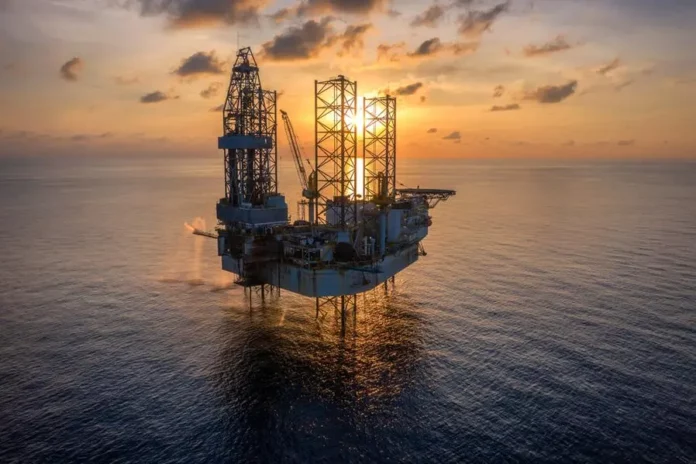
The offshore oil and gas sector is set for the highest growth in a decade in the next two years, with $214 billion of new project investments lined up. India has also lined up ambitious plans in this regard.
According to experts, the annual greenfield capital expenditure (capex) will break the $100 billion threshold in 2023 and in 2024 – the first breach for two straight years since 2012 and 2013.
As global fossil fuel demand remains strong and countries look for carbon-friendly production sources, offshore is back in the spotlight. According to Rystad Energy, offshore activity is expected to account for 68 percent of all sanctioned conventional hydrocarbons in 2023 and 2024, up from 40 percent between 2015-2018. In terms of total project count, offshore developments will make up almost half of all sanctioned projects in the next two years, up from just 29 percent from 2015-2018.
These new investments will be a boon for the offshore services market, with supply chain spending to grow 16 percent in 2023 and 2024, a decade-high year-on-year increase of $21 billion. Offshore rigs, vessels, subsea and floating production storage and offloading activity are all set to flourish.
One of the leading global drivers of this trend is the sizable expansion of offshore activities in the Middle East. For the first time, offshore upstream spending in the region will surpass all others, lifted by mammoth projects in Saudi Arabia, Qatar and the UAE. The area’s offshore spending growth looks set to continue at least for the next three years, growing from $33 billion this year to $41 billion in 2025. These countries are tapping into their vast offshore resources to meet rising global oil demand, backed by the necessary capital and infrastructure to outpace other producers.
Middle East is a key focus for Indian oil and gas companies as well. A consortium of several Indian oil companies is reportedly eyeing a stake in a hydrocarbon assets of the Abu Dhabi National Oil Company (ADNOC). Led by ONGC Videsh Ltd, the group is said to include Indian Oil Corporation Ltd, Bharat Petro Resources Ltd and Oil India Ltd.
ONGC has drawn up plans to invest $3.5 billion in the next 2-3 years to boost output from western offshore assets, the company had announced recently. It is also in talks with global oil majors, such as Exxon Mobil Corp, Chevron, Equinor etc to develop deepwater blocks. Indian companies already have two blocks in the UAE, of which one is a producing block, and the other exploration. The new consortium is expected to bid for another production block. In 2018, Indian companies had signed a deal with UAE to acquire a 10 per cent stake in the Lower Zakum oil field.
Domestically, ONGC has announced plans to invest over $2 billion in drilling a record 103 wells on its main gas-bearing asset in the Arabia Sea as it eyes a turnaround in production, which has of late been declining. ONGC has three assets off west coast, such as Bombay High, Heera and Neelam as well as Bassein and Satellite. The new wells are expected to add 100 million tonnes of production capacity.
Although the Middle East is leading the way, South America, the UK and Brazil are also closely behind. Investments in the North Sea from the UK and Norway will rise in the next two years. UK offshore spending is set to jump 30% this year to $7 billion, while Norwegian investments will hit $21.4 billion, an increase of 22% over 2022. Brazilian upstream spending is projected to approach $23 billion this year, with Guyana investments totalling $7 billion. In North America, spending on offshore in the US will top $17.5 billion and $7.3 billion in Mexico.
Simultaneously, global spending on low-carbon projects is expected to increase by $60 billion this year, 10 percent higher than 2022, helped by a significant rise in funding for hydrogen and carbon capture, utilization and storage infrastructure. In terms of total spending, this marks a slowdown from recent years, which averaged 20 percent annual increases.
Investments in green sectors surged 21 percent in 2022 to overtake related oil and gas spending for the first time, but inflation-spooked developers seem set to rein in spending growth this year. However, as inflationary pressure weakens, the spending is expected to rebound. Further, investments in the geothermal, carbon capture, utilization and storage as well as hydrogen, hydropower, offshore and onshore wind, nuclear and solar industries are set to hit $620 billion in 2023, up from about $560 billion last year. (IPA Service)
